Guide to Running Your First Ultra Marathon: Tips, Kit Essentials, and FAQs
 Karen Parnell
July 22, 2024
Karen Parnell
July 22, 2024
Guide to Running Your First Ultra Marathon: Tips, Kit Essentials, and FAQs
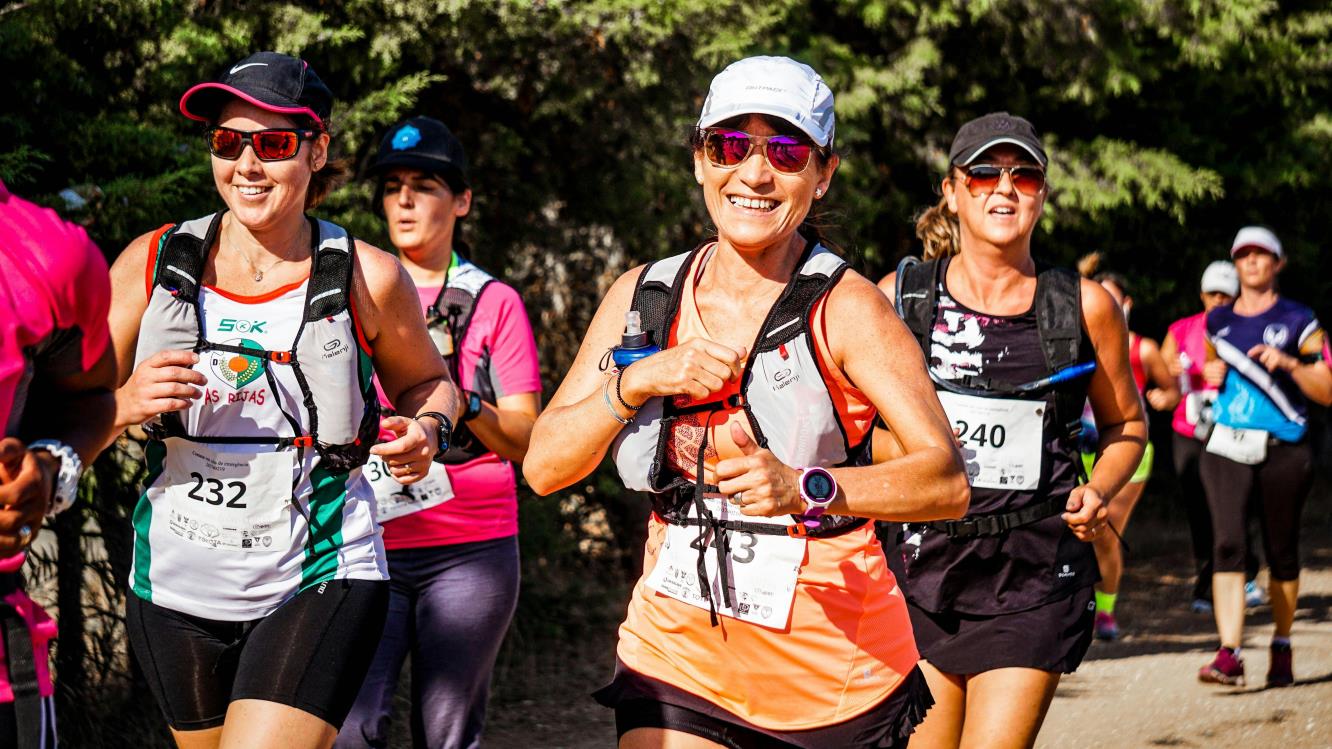
Photo by RUN 4 FFWPU
Get your FREE guide to Running Technique
So, you’re gearing up to tackle your first ultra marathon—congratulations!
Whether you’re aiming for a 50K, 50-mile, or even a 100-mile race, you’re about to embark on an incredible journey that will test your limits and reward your perseverance. I’m here to guide you through this exciting challenge with some key tips, gear selection advice and FAQs to help you navigate the ups and downs of ultra marathon running.
Running an ultra-marathon isn’t just about putting one foot in front of the other; it’s a whole new ball game that requires careful planning, mental toughness, and a bit of strategy.
From understanding how to fuel your body for hours on end to mastering the art of pacing and navigating tough terrain, this guide is designed to help you every step of the way.
So, lace up those shoes, grab your gear, and let’s dive into what it takes to not just finish, but truly thrive in your first ultra marathon.
Ready to embrace the adventure? Let’s get started!
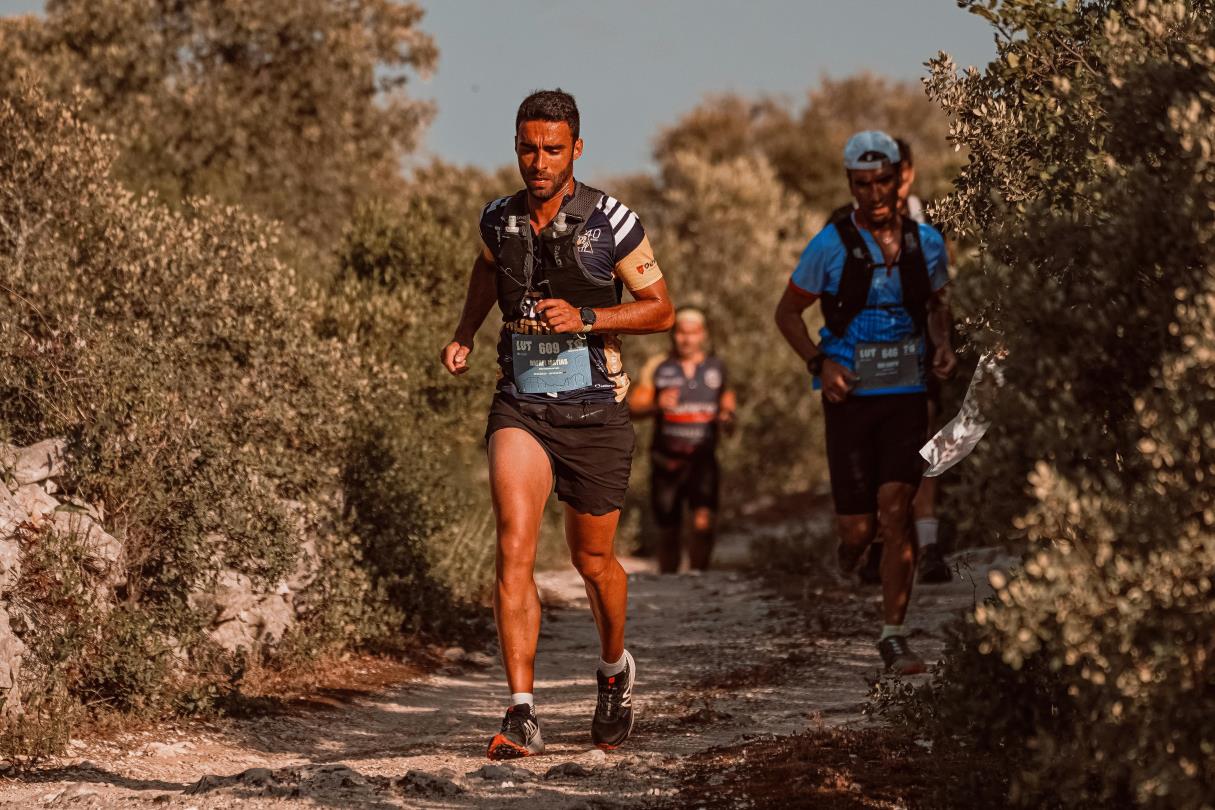
Photo by RUN 4 FFWPU
Get your FREE guide to Running Technique
Ultra Marathon Top Tips
Here are some essential tips to help you succeed in your first ultra marathon:
1. Start with a Training Plan
Begin your training well in advance, ideally 4-6 months before the race. Gradually increase your mileage each week, incorporating long runs and back-to-back training sessions to simulate race-day conditions.
2. Focus on Endurance
Unlike shorter races, ultra marathons require a strong focus on endurance rather than speed. Build your aerobic base through long, slow-distance runs to condition your body for the extended effort. Zone 2 should become your friend!
3. Practice Nutrition and Hydration
Nutrition and hydration strategies are crucial during an ultra-marathon. Experiment with different foods and drinks during training to find what works best for you.
As a general rule of thumb, aim to consume about 200-300 calories and 16-24 ounces or 475-710ml of fluid per hour of running. To find out your specific needs then Precision Hydration has a handy calculator.
4. Check Aid Station Distances
Research the distance between aid stations on the course of your race. This will help you plan your nutrition and hydration needs. If aid stations are spaced far apart, carry enough supplies to sustain you between them. A hydration vest can be invaluable for carrying water and essential nutrition.
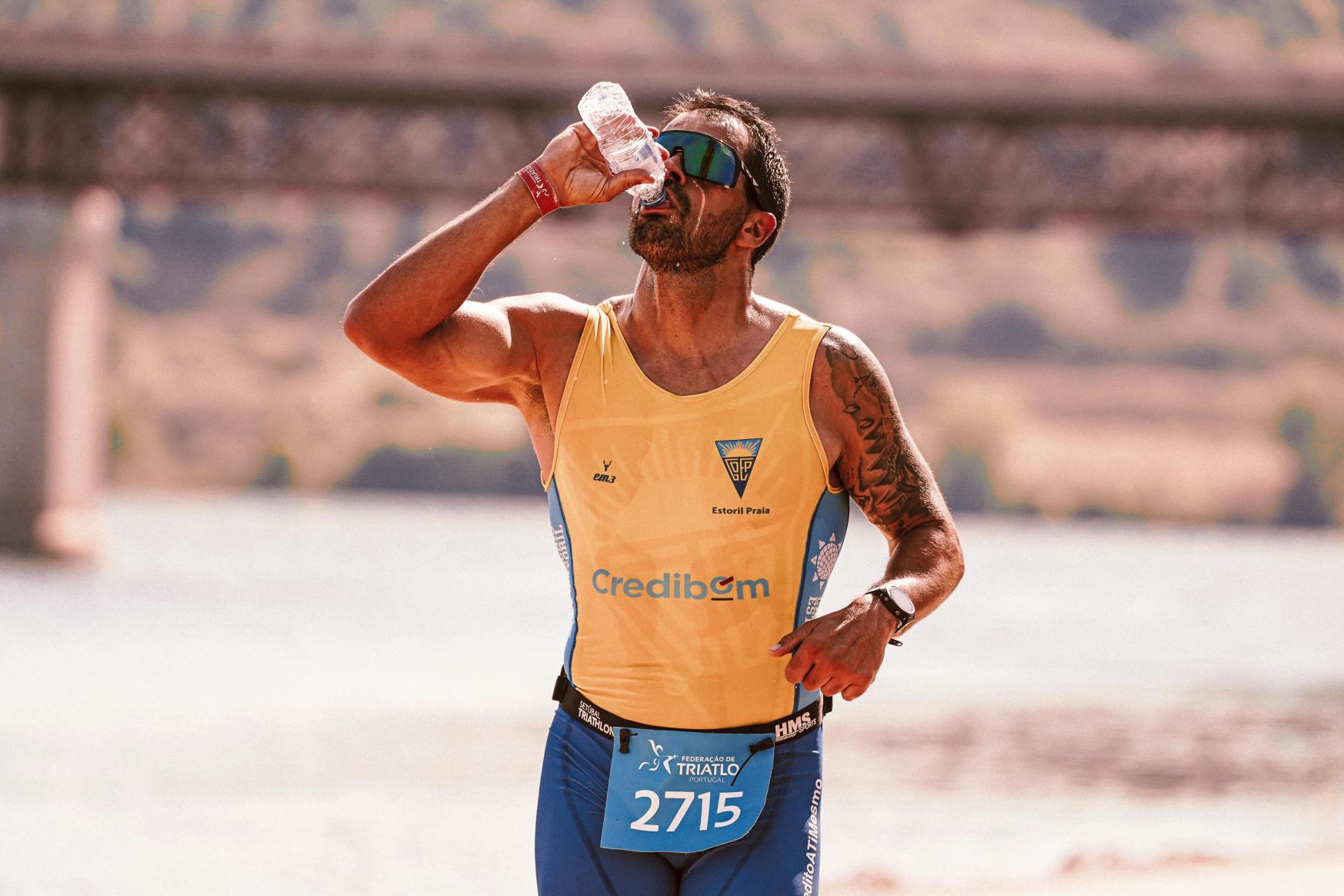
Photo by RUN 4 FFWPU
Get your FREE guide to Running Technique
5. Carry Essential Nutrition and Hydration
Based on aid station distances, ensure you have enough calories and fluids to last until the next station. Pack high-energy snacks, gels, or bars that you’ve tested during training. Hydration vests or belts can help you comfortably carry these supplies.
6. Incorporate Sweat Testing
Sweat testing helps you understand your individual hydration needs. By measuring how much you sweat and how much sodium you lose, you can tailor your hydration strategy to maintain optimal fluid balance and electrolyte levels.
7. Lubricate Strategically
Prevent chafing and blisters by applying anti-chafe lubricants or creams to areas prone to friction, such as the thighs, underarms, and feet. Reapply as needed during long runs and race day. Popular options include anti-chafe balms, or specialty running lubricants. I like to use Body Glide.
8. Manage Blisters
Blisters can be a common issue in ultra marathons. To minimize their occurrence, choose well-fitting shoes and moisture-wicking socks. During training, practice how to deal with blisters, including how to safely pop and protect them if they do occur. Consider carrying blister treatment supplies such as Compeeds (I swear by these) moleskin or blister pads.

Source: solepodiatry.com.au
Get your FREE guide to Running Technique
9. Run Hills Efficiently
Uphill
When running uphill, keep your body upright and lean slightly forward to maintain momentum. Shorten your stride and use a quick, light footfall to conserve energy. Engage your core and arms to help propel yourself up the hill.
It’s ok to walk the uphills and sometimes this can actually be faster. Remember when you hit dirt and vert pace goes out the window!
Downhill
On descents, lean slightly back and use a controlled, slightly crouched position to absorb the impact. Keep your strides short and avoid over-striding to reduce the risk of injury. Practice downhill running during training to improve your technique and comfort. Again, if it’s really steep or rocky then walking may be the best option and keep relaxed.
10. Use Running Poles Wisely
Running poles can be a valuable tool in ultra marathons, especially on steep terrain. They help distribute the effort across your upper body and reduce the strain on your legs.
Practice using poles in training to develop a rhythm and technique that works for you. Adjust the length of the poles for different terrain and ensure they’re comfortable to grip. You may not need them all of the time so choose a pair that can be folded and packed. I use Black Diamond Distance carbon Z poles.
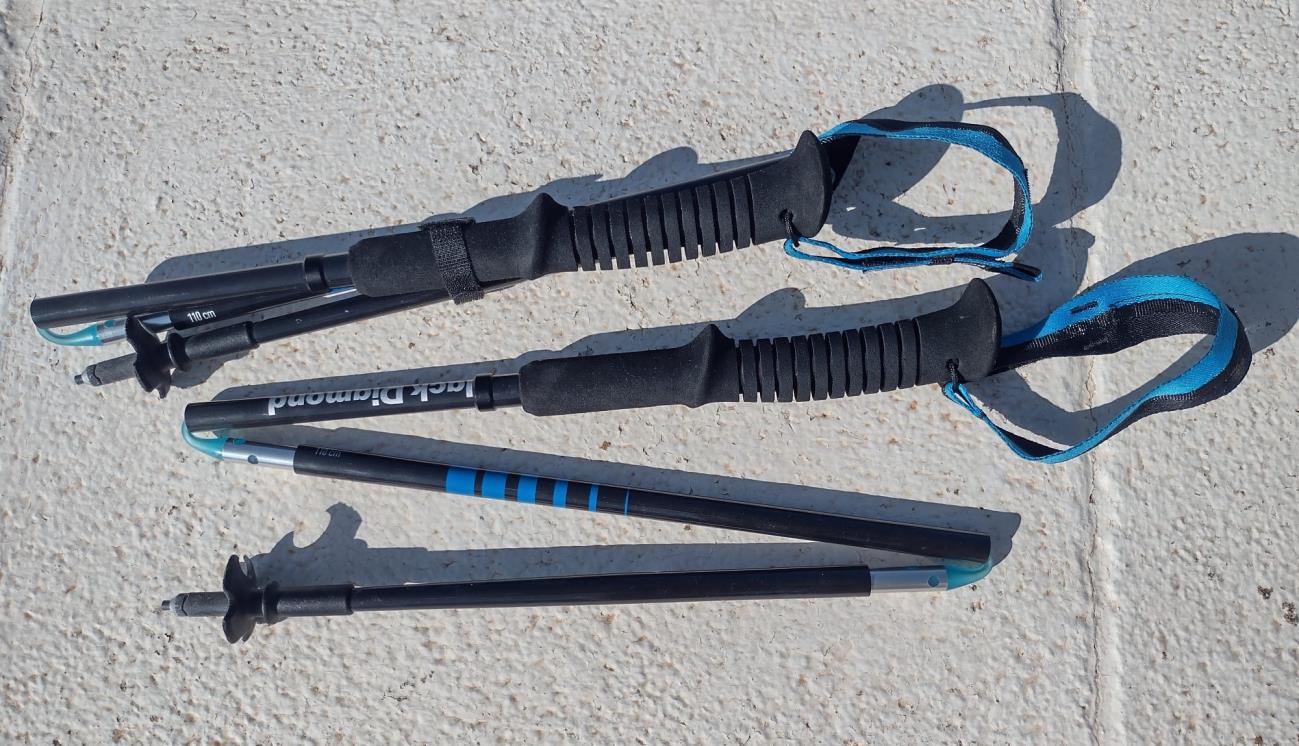
My Black Diamond Distance carbon Z poles.
Get your FREE guide to Running Technique
11. Wear a Hydration Vest
A hydration vest is essential for carrying water and supplies comfortably over long distances. Choose a vest that fits well and has enough capacity for your needs. Make sure it’s adjustable and doesn’t bounce excessively while running.
Practice running with the vest during your training to get used to the weight and ensure it doesn’t cause chafing. An example is this one from Salomon.
12. Incorporate Strength Training
Building overall strength is crucial for ultra marathon success. Focus on exercises that strengthen your core, legs, and upper body. Key areas include your glutes, hamstrings, quadriceps, and calves.
Strong muscles help improve your running efficiency and reduce the risk of injury. Incorporate weight training, bodyweight exercises, and resistance bands into your routine.
Here’s a FREE strength training guide.
13. Prioritize Mobility and Flexibility
Maintain and improve your range of motion with regular stretching and mobility exercises. Focus on areas that tend to get tight from long runs, such as your hips, hamstrings, calves, and lower back.
Yoga or dynamic stretching routines can enhance flexibility and help prevent injuries.
Here’s a FREE 30 Day Mobility Challenge.
14. Embrace Walking
It’s perfectly okay to walk during an ultra-marathon. In fact, walking can be a strategic tool, especially on steep inclines or when you’re feeling fatigued. Incorporate walking breaks into your training to build comfort and efficiency with this technique. Listen to your body and use walking to manage your energy and keep moving steadily toward the finish line.
15. Master Mental Resilience
Ultra marathons are as much a mental challenge as a physical one. Prepare yourself mentally by visualizing success, breaking the race into manageable segments, and developing strategies to stay motivated when fatigue sets in.
Manifest finishing the event.
Work on your mantra’s during training as these will help you through the tough parts. Don’t have one yet – here are some ideas for mantras.
16. Know the Course
Familiarize yourself with your course, including elevation changes, aid station locations, and terrain types. Adjust your training to simulate similar conditions if possible.
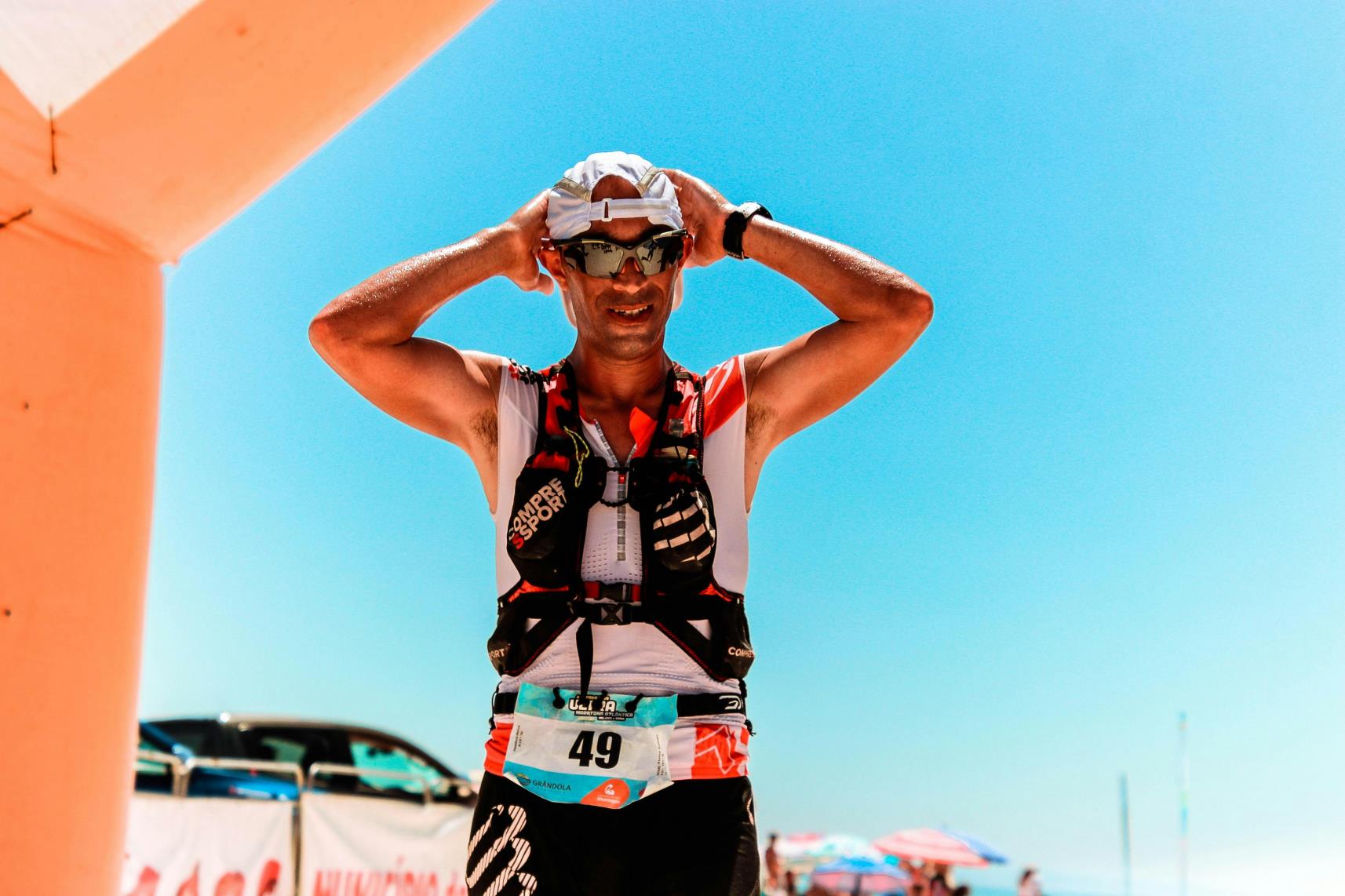
Photo by RUN 4 FFWPU
Get your FREE guide to Running Technique
17. Utilize Aid Stations Wisely
Aid stations are a crucial part of ultra marathons, providing water, food, and medical support. Familiarize yourself with the aid station layout and the types of supplies available. Use these stations to refuel, hydrate, and check on your physical condition. Have a plan for how long you'll spend at each aid station to avoid losing time.
If you know the hydration and nutrition that will be on the course, then practice with them during training so you know you will be able to use them, and they won’t cause your GastroIntestinal (GI) distress. If they do cause you issues then you can plan to carry your own or get your “sherpa” to meet you at the aid stations.
Even with the best planning you may get a stomach upset on event day so work out a strategy that works for you and take toilet paper and/or biodegradable wipes with you.
18. Heat Acclimatization
If your race is in a hot climate, train in similar conditions to acclimate your body. This can include running during the hottest part of the day, wearing extra layers to simulate heat, and gradually increasing your exposure to high temperatures. Always remember to hydrate well and only train in areas where you can get extra hydration if needed.
Here are some heat acclimatization ideas.
19. Listen to Your Body
Pay attention to any signs of injury or overtraining during your preparation. Rest when needed and don’t hesitate to seek professional advice if you experience persistent pain or discomfort.
20. Have a Support Plan
Ultra marathons often have remote sections where support crews are essential. Plan ahead for crew “sherpa” support, aid station visits, and logistical needs during the race.
21. Stay Flexible
Be prepared for unexpected challenges such as weather changes or course alterations. Develop a flexible race strategy that allows for adjustments based on conditions and how your body feels on race day. If it’s cold, then plan on wearing layers and if it’s hot then make sure you are covered up or have sunscreen.
22. Celebrate Milestones
Throughout your training and during the race, celebrate your achievements and milestones. Completing an ultra-marathon is a remarkable accomplishment, so enjoy the journey and the experience.
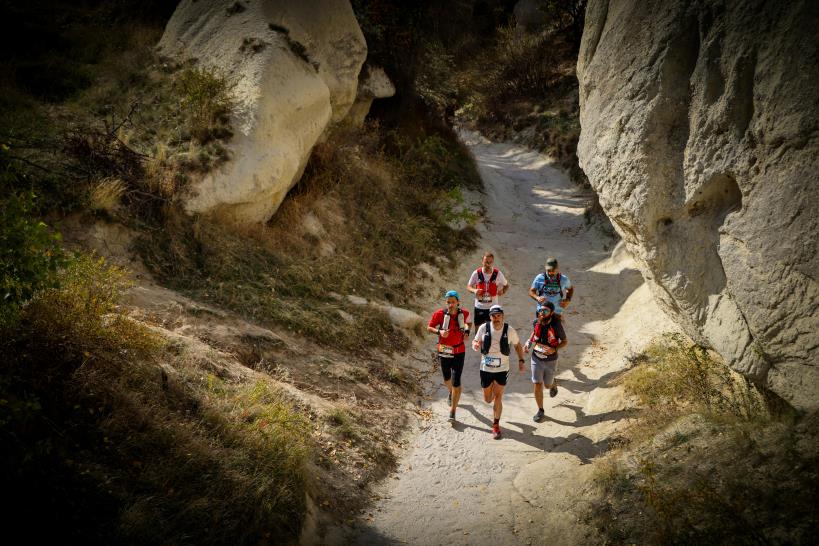
Photo by Emrah Yazıcıoğlu
Get your FREE guide to Running Technique
Some Top Tips from Ultra Marathon Runners on FaceBook
There’s a great FaceBook group with thousands of ultra runners which can help support you on your journey. It’s called “UltraRunning” (no surprises there!). Here are some of their top tips:
- Walk before you have to, drink before you are thirsty, eat before you are hungry.
- You don't run 100 miles, you run from tree to tree.
- “Forward is a pace!”
- Run 9 min, walk 1min and see how you feel at mile 22.
- “The miracle isn’t that I finished. The miracle is that I had the courage to start.”
— John Bingham
- Salted Potatoes (this is something lots of ultra runners eat. Boil or back then smoother in sea salt to give you carbs and replenish salt lost through sweating.
- Your race. Your pace.
- Rest is an active verb. Do it.
- Train like you’ve never won, race like you’ve never lost.
- Run, walk, crawl, A mile is a mile. Don't matter how fast you are.
- Get your nutrition sorted cause that is what will get you over the line in an ultra
- Run the mile you're in i.e. be present
- Don’t start too fast and burn out early
- Comparison is the thief of Joy!
- There’s is a piece of running advice out there which will really resonate with your journey of how you got here and where you hope to go. When you hear it, turn it in to a mantra. Mine: you are a worrier, I mean warrior! Nice and simple and still easy to remember when your 95 miles in.
- A 15-minute mile is just as far as a 6-minute mile, so enjoy the run every time!
- Run till it gets too hard, walk until it gets too easy.
- If you can't see over it... hike it.
- Don't forget to look up, or you will miss the journey
- Plan for a way to carry whatever you will need between aid…sometimes that might be 5 or 6 miles on your own.
- Run on trails from now on, time on feet is important. Eat solid food and drink electrolytes before you’re thirsty. Cross training will help preventing injuries, swimming, walking and biking
- Trail runs: Train with elevation. Practice walking. A LOT. Eat real food.
- Walk the hills, run the downhills and flats.
- Race how you train, train how you race. No new shoes or foods on race day, no matter what the Internet says. Train for longer distances, 5x5K is not the same as 1x 25K; you need to learn how to spend long periods on your feet moving. Don't burn yourself out early on, or go too hard uphills. You're not going to win (probably), so don't stress about people passing you. I have multiple friends a decade older than me who I'll never be able to beat.

Photo by Luca Sammarco
Get your FREE guide to Running Technique
Recommended Ultra Running Books
Here are some ultra running books that may help with your training journey:
- Hal Koerner's Field Guide to Ultrarunning: Training for an Ultramarathon, from 50K to 100 Miles and Beyond. Amazon: £13.89
- Running Your First Ultra: Customizable Training Plans for Your First 50K to 100-mile Race
Ultra Marathon Training Plans
There are many options for training for an ultra-marathon, you may work with a coach or opt for a training plan. I would strongly recommend using a training plan as a minimum rather than “winging it”.
If you are on a tight budget then there are free training plans for the Ultra Ladies.
If you prefer training using an electronic training plan with heart rate, RPE or running power (rFTPw) targets then there are plans on Final Surge and TrainingPeaks.
Conclusion: Ultra Running Success
Running your first ultra marathon is a personal journey that will push you beyond your limits.
Embrace the challenges, stay focused on your goals, and enjoy the incredible sense of achievement that comes with crossing the finish line of your first ultra marathon. Good luck and happy running!
Karen Parnell is a Level 3 British Triathlon and IRONMAN Certified Coach, 8020 Endurance Certified Coach, WOWSA Level 3 open water swimming coach and NASM Personal Trainer and Sports Technology Writer.
Karen is currently studying for an MSc in Sports Performance Coaching at the University of Stirling.
Need a training plan? I have plans on TrainingPeaks and FinalSurge:
I also coach a very small number of athletes one to one for all triathlon and multi-sport distances, open water swimming events and running races, email me for details and availability. Karen.parnell@chilitri.com
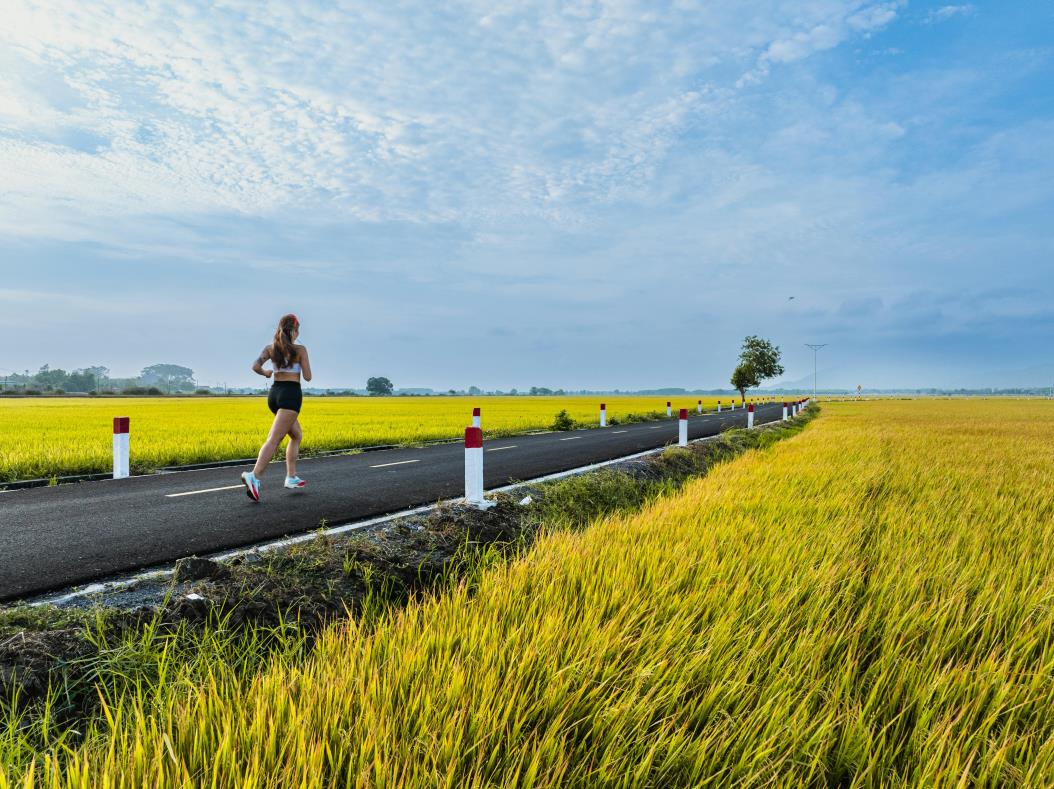
Get your FREE guide to Running Technique
Ultra Marathon FAQ
What should I include in my ultra marathon kit?
A: Your ultra marathon kit is crucial for a successful race. Here’s a list of essential items to consider:
- Hydration Vest or Pack: A hydration vest or pack is vital for carrying water and essential nutrition. Look for one with a comfortable fit, enough capacity for your needs, and pockets for easy access to gels, bars, and other essentials. An example is this one from Salomon.
- Running Shoes: Choose a pair of trail shoes that provide good grip and support, suited to the terrain of your race. Make sure they are well-broken-in but not worn out. Consider having a backup pair or lightweight, cushioned shoes for later in the race. I like the Hoka Speedgoat or ASICS Trabuco Max.
- Socks: Opt for moisture-wicking, anti-blister socks. Consider carrying an extra pair or two for changes during the race. I like merino wool socks like those from Smart Wool.
- Anti-Chafe Cream: Apply anti-chafe cream to areas prone to friction, like your thighs and underarms. Pack extra for reapplication during the race. . I like to use Body Glide.
- Blister Treatment: Bring blister pads or moleskin in case of emergencies. It’s also helpful to know how to address blisters if they arise. I use Compeeds
- Clothing: Wear moisture-wicking, breathable layers suited to the weather conditions. Include a lightweight, waterproof jacket if rain is expected. Always have a hat or visor and gloves if temperatures are likely to drop. The products from Columbia are great.
- Headlamp and Batteries: For races that extend into the night, a reliable headlamp with extra batteries is essential for visibility and safety.
- First Aid Kit: A small, personal first aid kit should include items like bandages, antiseptic wipes, pain relievers, and any personal medications.
- Energy Foods and Drinks: Pack your favourite gels, bars, and electrolyte powders. Make sure to test these during training to ensure they sit well with your stomach.
- Sun Protection: Sunscreen, lip balm with SPF, and sunglasses can protect you from sunburn, especially on exposed trails.
- Navigation Tools: Depending on the race, you might need a map, GPS device, mobile phone with off-line maps or course-specific instructions.
- Trekking Poles: If your race involves steep or technical terrain, running poles can provide additional stability and reduce strain on your legs. I use Black Diamond Distance carbon Z poles.
- Emergency Whistle and ID: Carry an emergency whistle for safety and an ID in case of an emergency.
How do I know what gear is right for me?
A: The best gear for you depends on factors like race distance, terrain, and weather conditions. Test different items during your training runs to see what works best for you. Prioritize comfort, functionality, and reliability.
How much water and food should I carry?
A: Aim to carry enough water and food to last until the next aid station, considering the distance between them. For most ultras, a hydration vest with a capacity of 1.5 to 2 Litres of water, along with snacks or gels, should suffice. Adjust based on personal hydration needs and the race’s aid station layout.
What if I need more help with my gear or strategy?
A: Seek advice from experienced ultra runners or a coach. Join online forums or local running groups for tips and recommendations. Many running stores also offer consultations for ultra marathon gear.
How do I prepare for different weather conditions?
A: Check the weather forecast and prepare accordingly. For cold weather, layer up with moisture-wicking base layers and a waterproof jacket. For heat, wear light, breathable clothing and bring sun protection. Always have options for changing conditions and be ready to adjust your gear as needed.
Can I use my regular running shoes for an ultra-marathon?
- A: While you can use regular running shoes, trail shoes are often better suited for ultra marathons due to their enhanced grip and protection. Ensure your shoes are well-tested in training and suited to the terrain of your race. Hoka Speedgoats or ASICS Trabuco Max. are ones you could consider.
How can I ensure I have the right nutrition and hydration?
A: Practice your nutrition and hydration strategy during long training runs. Understand your body’s needs by experimenting with different foods and drinks. During the race, monitor your energy levels and adjust as needed. Utilize aid stations effectively and listen to your body’s cues. Check the colour of your urine – if its darker than normal then you need to hydrate.
What if I start feeling unwell or injured during the race?
A: Ultra marathons can be taxing, so listen to your body. If you feel unwell or injured, assess the situation and seek help at the nearest aid station. It’s important to prioritize your health and safety, and don’t hesitate to withdraw from the race if necessary.
How do I handle the mental challenges of an ultra-marathon?
A: Mental resilience is key. Break the race into smaller segments, stay positive, and use visualization techniques. Develop a mantra or strategy to keep yourself motivated during tough patches. Remember, it’s okay to walk and take breaks as needed.
Feel free to reach out if you have more questions or need additional support. Best of luck with your ultra marathon journey—you’ve got this!
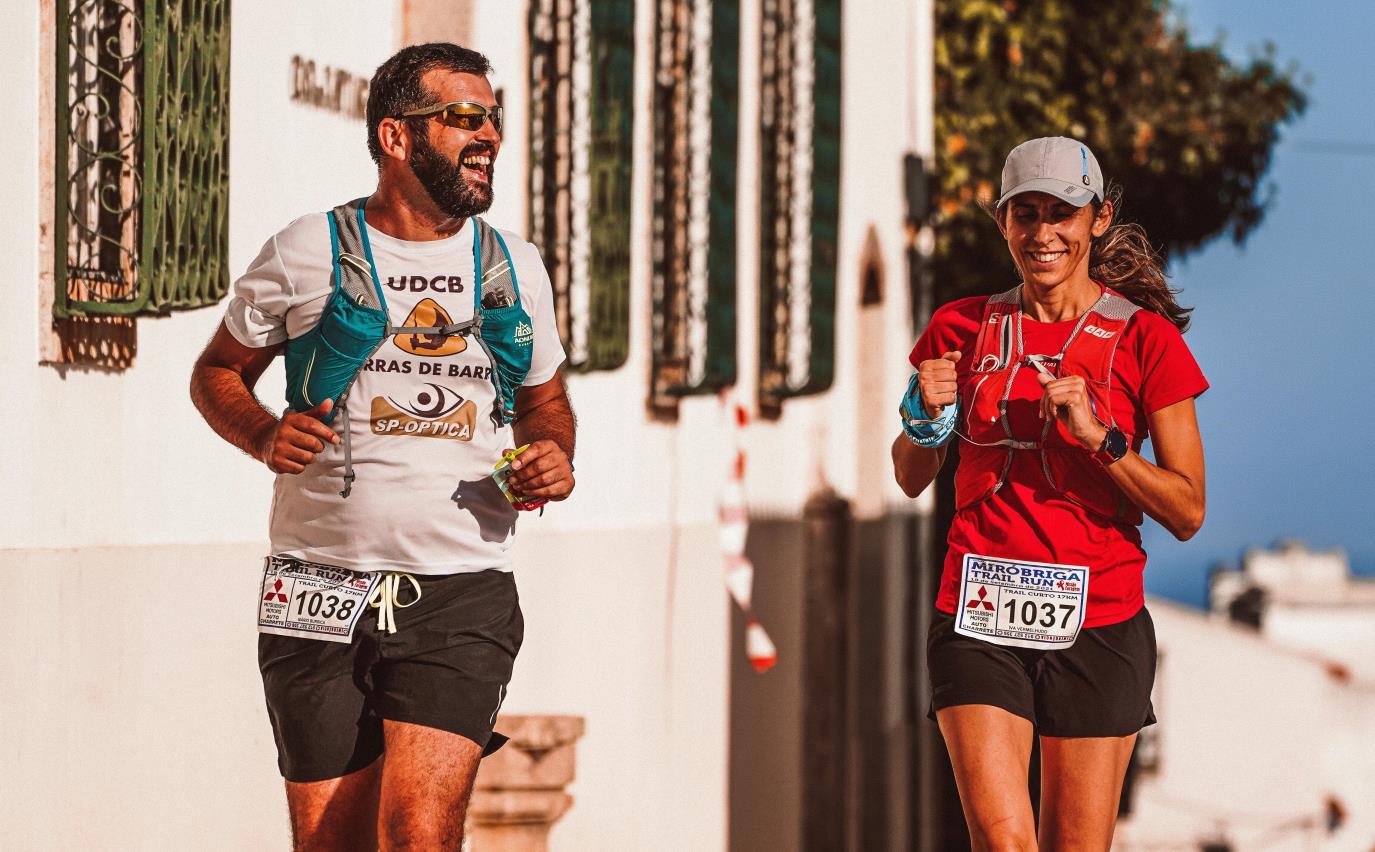
Photo by RUN 4 FFWPU

.png)